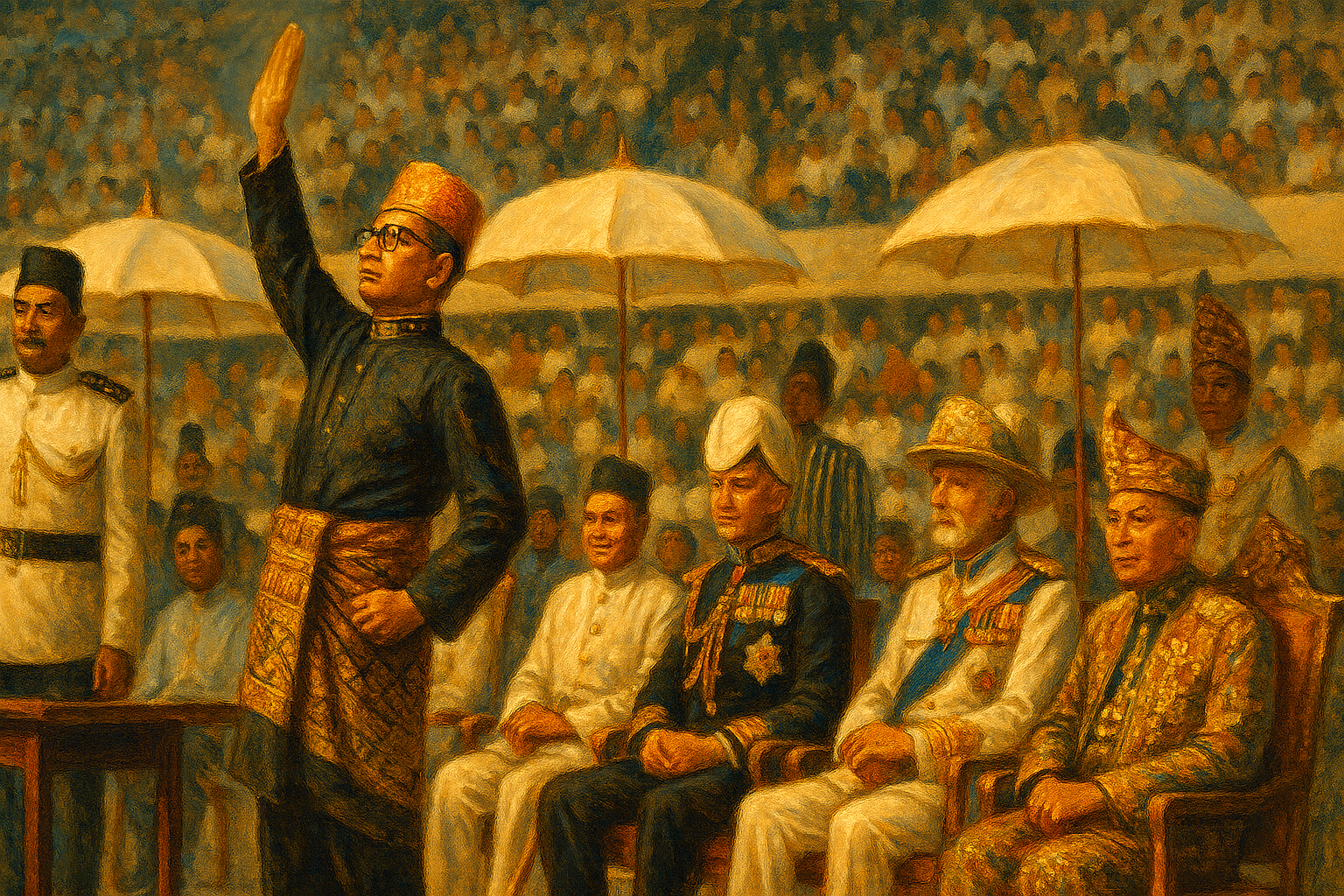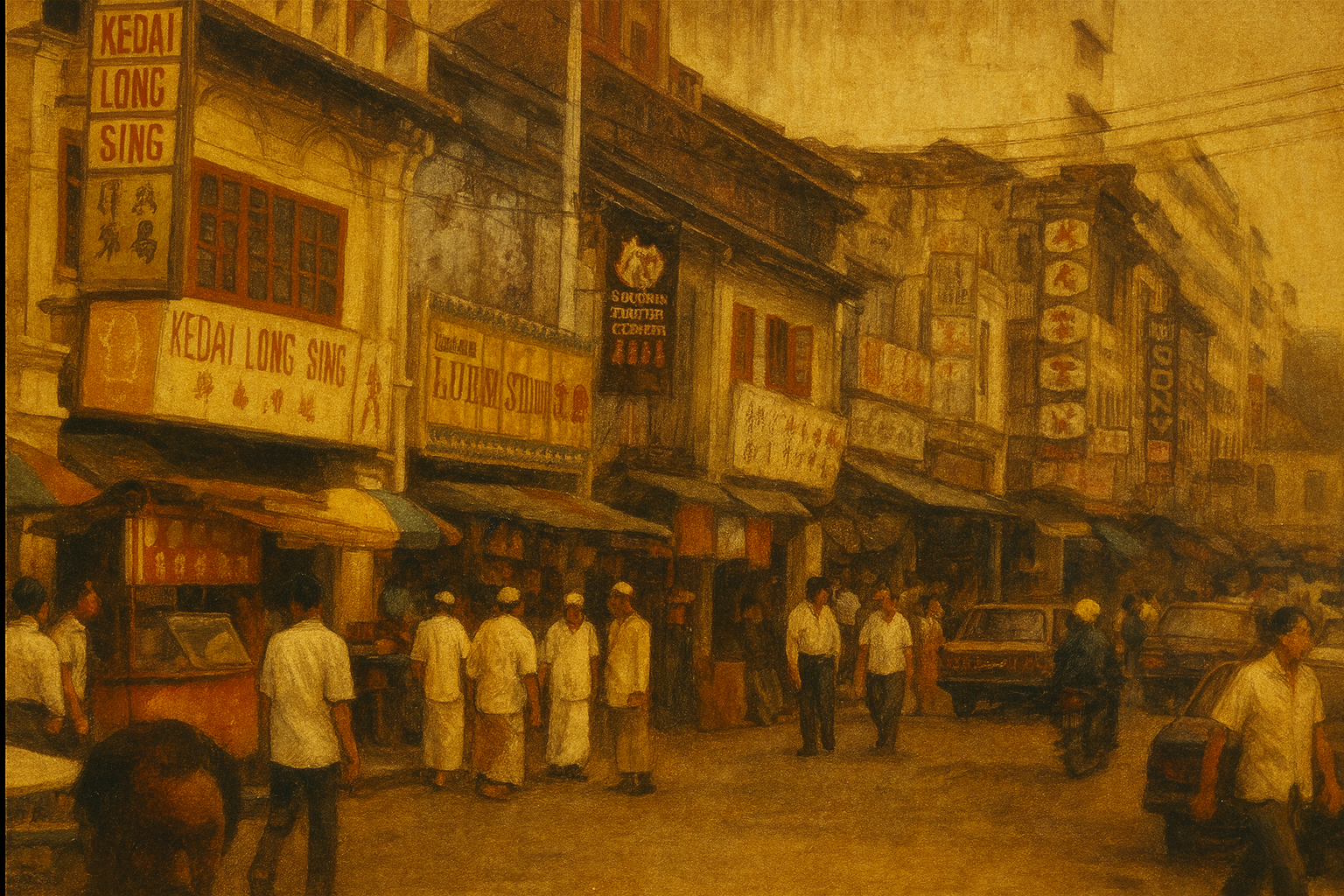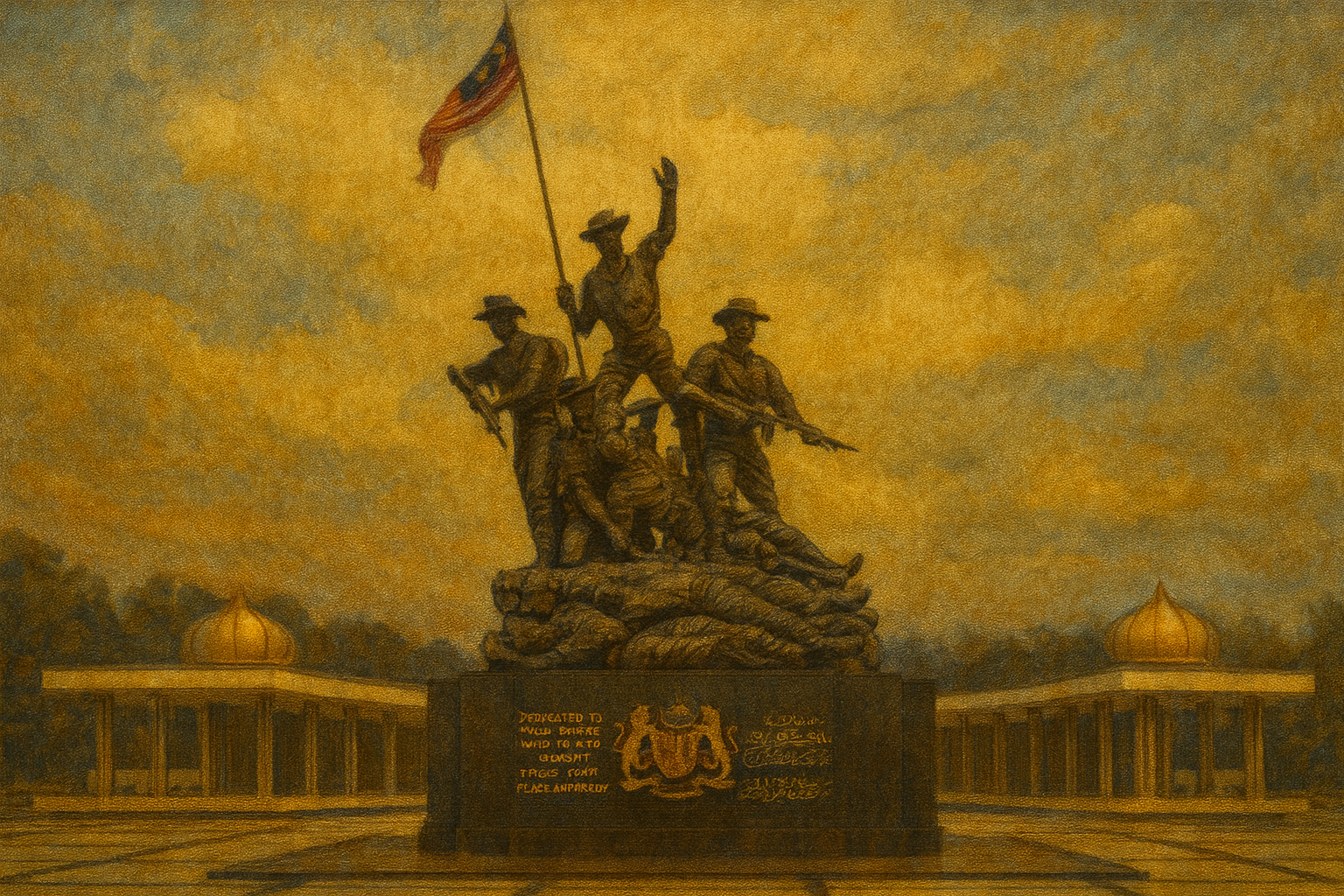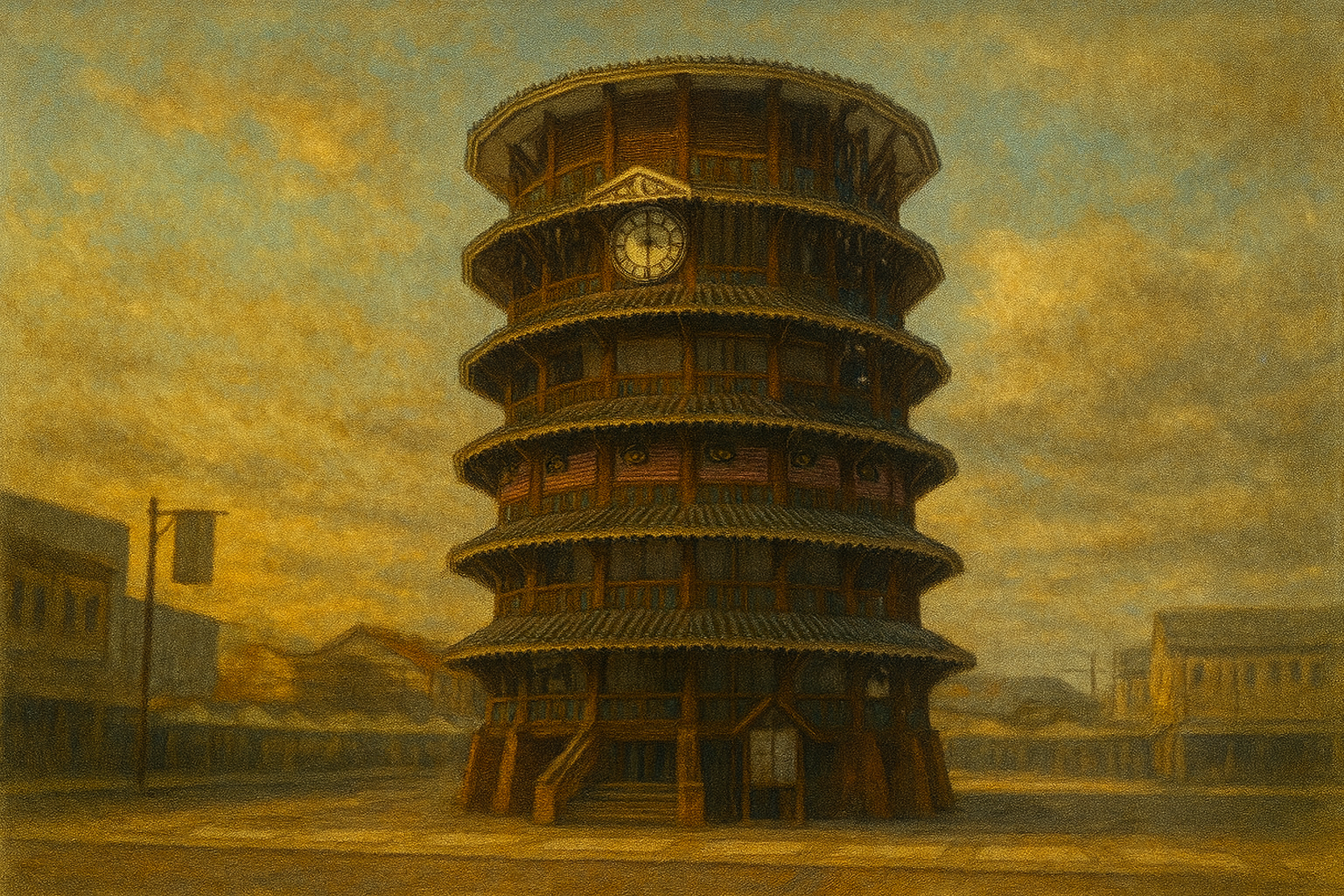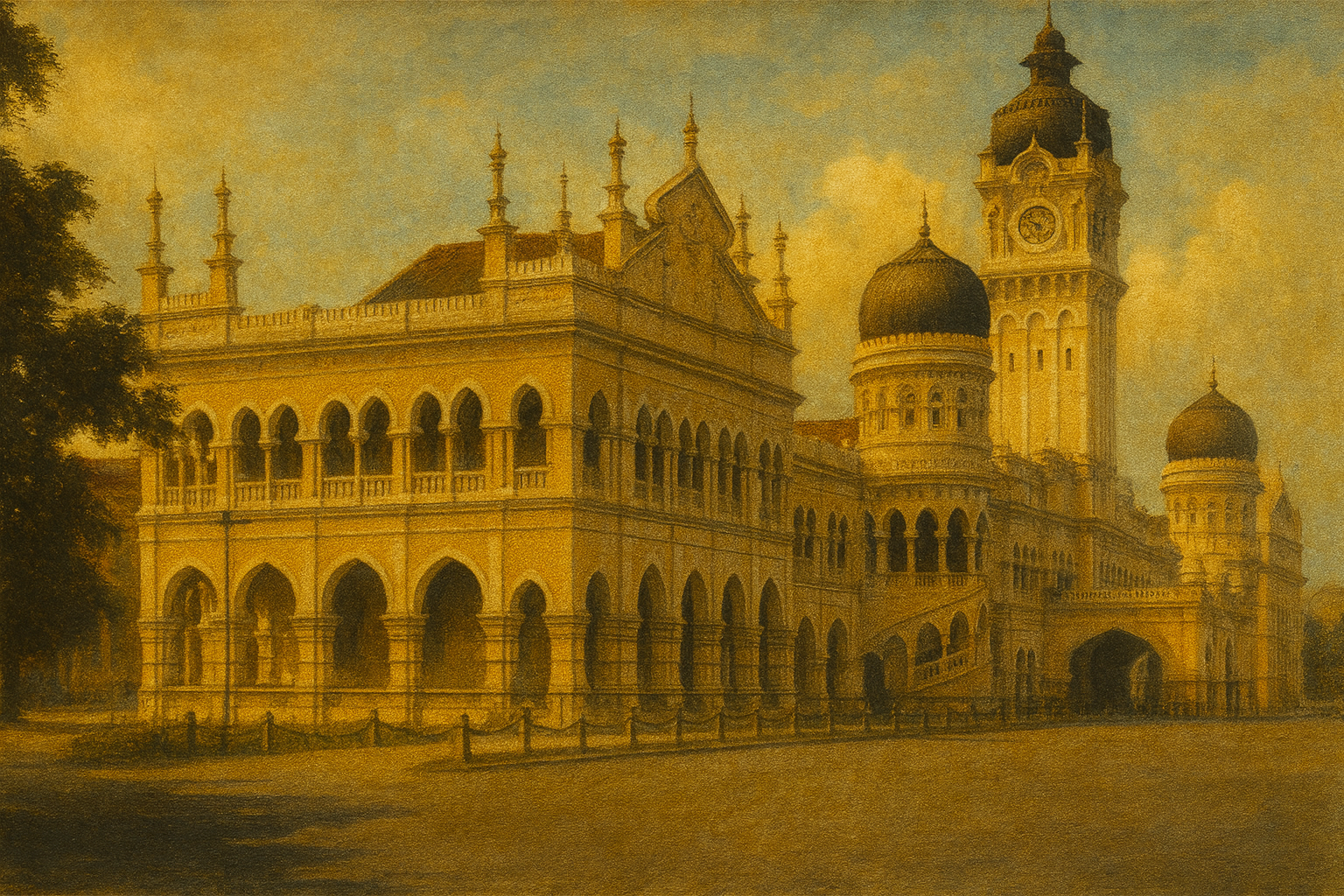1950



| Currency Rate to USD | 3.06 |
| GDP Per Capita (USD) | 200 |
| Population (millions) | 5.19 |
| Nasi Lemak Price | 10 cents |
| Teh Tarik Price | 5 cents |
| Urban Population Percentage | 18% |
Malayan Emergency Era
Life during the Emergency meant fear, disruption, and deep divisions. For many rural folks, night-raids, curfews, food scarcity, and forced relocations (into “New Villages”) came with the insurgency.
Cold War
After WWII, the world splits into blocs—capitalist West led by U.S., communist East led by USSR. People everywhere feel the pressure: fear of nuclear annihilation, propaganda, ideological influence in media and education, proxy wars in Asia, Africa and Latin America.
Labis incident
The Labis incident of 22 January 1950 was one of the first significant British victories in the Malayan Emergency, a guerrilla war between communist insurgents and colonial forces.

Malaya at the 1950 British Empire Games
Malaya's historic debut at the 1950 British Empire Games in Auckland, New Zealand, where a team of four weightlifters won two gold medals, one silver, and one bronze, securing the nation's first international sporting medals and topping the weightlifting medal table.

Bukit Kepong incident
The Bukit Kepong incident was a pivotal clash during the Malayan Emergency on 23 February 1950, where communist guerrillas attacked a remote police station in Johor, leading to significant losses but inspiring national resilience against insurgency.

Appointment of Harold Briggs as Director of Operations in Malaya
In April 1950, amid the Malayan Emergency, Lieutenant General Sir Harold Briggs was appointed Director of Operations to counter the communist insurgency, leading to the development of the Briggs Plan that resettled rural populations to cut off guerrilla support.
Battle of Semur River
The Battle of Semur River was a significant clash on 25 March 1950 during the Malayan Emergency, where communist insurgents of the Malayan National Liberation Army ambushed a patrol of the Malay Regiment near Gua Musang, resulting in heavy casualties and highlighting the challenges of jungle warfare.

The Briggs Plan
The Briggs Plan was a British counter-insurgency strategy during the Malayan Emergency, involving the forced resettlement of around 500,000 rural inhabitants into guarded 'new villages' to cut off support for communist guerrillas.
Enactment of the Evidence Act 1950
The Evidence Act 1950 was enacted in the Federation of Malaya to standardize rules on evidence admissibility and proof, amid the Malayan Emergency, drawing from British common law and addressing fragmented colonial procedures.
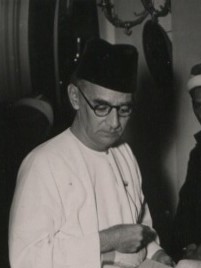
Resignation of Onn Jaafar as Menteri Besar of Johor (1950)
Onn Jaafar, a key figure in Malay nationalism, resigned as Menteri Besar of Johor on 31 May 1950 to prioritize his role in UMNO, marking a shift from traditional royal authority to party-driven politics in pre-independence Malaya.

Outbreak of the Korean War
The Korean War erupted on 25 June 1950 when North Korean forces invaded South Korea across the 38th parallel, igniting the first major armed conflict of the Cold War.

